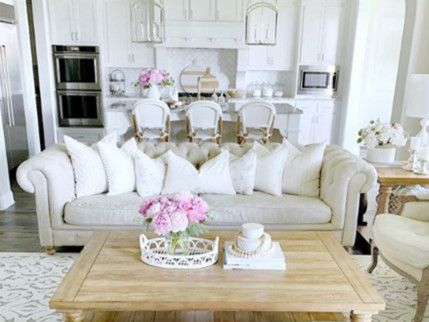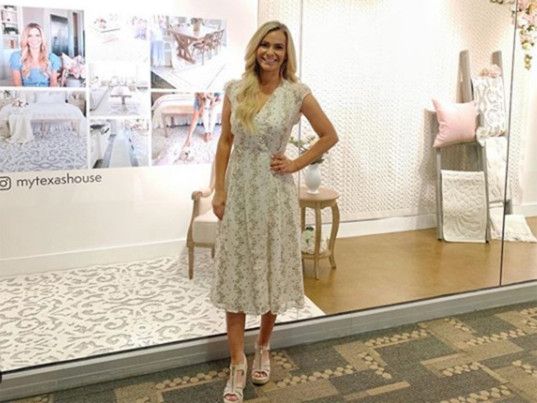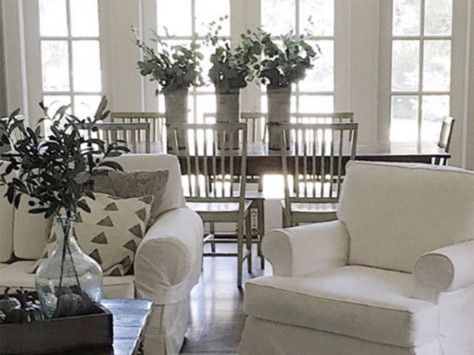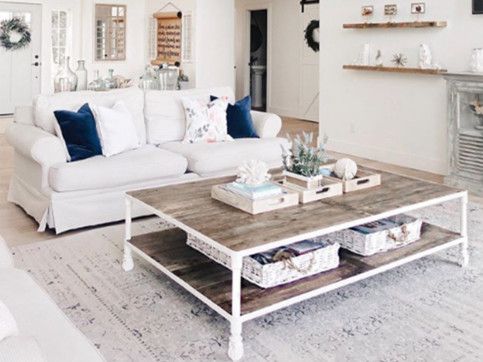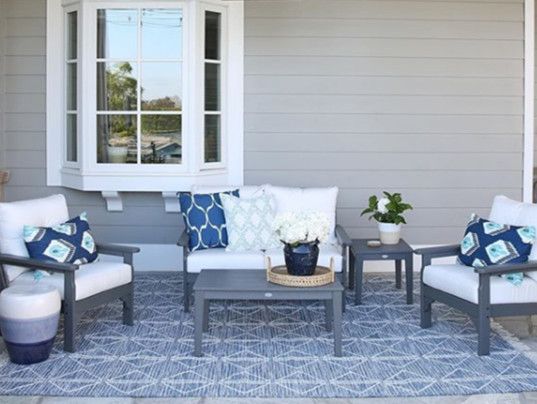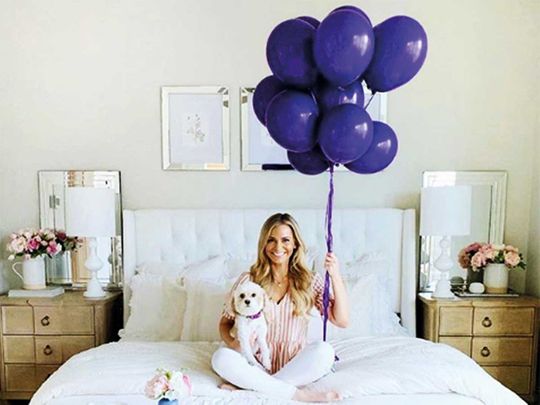
Erin Vogelpohl has tried mixing darker blues and greens into the decor of her five-bedroom house in Dallas, but they don’t play well with her 447,000 Instagram followers. So she sticks with a soft blush palette, the millennial pink that is ubiquitous on Instagram, and in her living room.
For home-decor Instagram influencers like Vogelpohl, the house is the star. And tending to a star can be an all-consuming job, particularly when you live in it.
Her account, @mytexashouse, and others like it have amassed tens of thousands of followers by cycling seemingly endless photographs of private living rooms, dining rooms, kitchens and bedrooms. Some have gained traction chronicling the restoration of an old home or the construction of a new one. A few dabble in areas like fashion, parenting, cooking and make-up, but they primarily peddle the infinite marketability of a home’s interior, with all its trappings.
Hardwood floors glisten. Kitchens, with marble countertops, are invariably white. Light floods the rooms from every angle. A throw blanket is tossed on a bed, with a plush duvet and a half dozen pillows. Other focal points might include a selection of shoes or camisoles casually displayed on a tufted fabric bench, almost begging to be bought.
The house does feel a little less like my own because so many people know it.
Attract enough followers eager to see shots of a dining room centrepiece with fresh-cut summer flowers, and brands will pay for access, offering the potential of a six-figure salary and plenty of free merchandise. Those who run successful accounts generally describe their rise as accidental, born from a mix of luck (a nod from the Better Homes & Gardens Instagram account with its 1.8 million followers helps) and a passion for their homes. Some had successful blogs with loyal readerships that followed them to social media.
But there is a price to pay for internet fame derived from your home. The space where you raise your children, kick off your shoes and go to bed lives online, more as a professional showroom than as private living quarters. Consider buying a new sofa or accent chair, and you may pause to wonder how well the piece will photograph. Spill a protein shake on the kitchen runner, and the aftermath becomes an Instagram stories tutorial on how to extricate chocolate from a rug.
“The house does feel a little less like my own because so many people know it. So many people have seen inside every space,” said Vogelpohl, 41, who lives there with her husband and three children. “I don’t want to entertain because it’s my workspace — literally, the whole thing.”
It takes work to keep a house looking both novel and spotless. How many pictures of the same family room can you post before a follower moves on to something new?
It’s not like I’m pimping my house. It’s more that we’ve created this wonderful place and I want to share it.
Before Leslie Saeta turned her six-bedroom house in South Pasadena, California, into an Instagram destination, she had two boxes of Christmas decorations. Now she has 17. And how could she not?
The 239,000 followers of @my100yearoldhome expect to see her banister wrapped in garlands and wreaths hung from every window by early December.
To keep the 104,000 followers of @ninawilliamsblog intrigued, Nina Williams, 36, frequently changed the decor of the six-bedroom house in West Des Moines, Iowa, where she and her family lived until they sold it in May. Now she is enjoying a temporary reprieve, as the family lives in a rental nearby, while they build a 7,000-square-foot house on 40 acres. As that project is the current focus of her Instagram account, she can enjoy a few months of living outside the internet fishbowl, and indulge in decorating sins like covering the refrigerator with magnets and her children’s drawings.
To operate a successful account can be a full-time job of creating content, responding to comments and coordinating with brands. Saeta, 60, dedicates 60 hours a week to tending her account and blog, which she describes as a “small media company.”
Williams, a stay-at-home mother with four children, spends two to three hours a day on her account and blog, earning about half as much as she estimates she might if she worked on it full-time.
It might be summer vacation for Erin Rollins’ three children, but the 208,000 followers of @erin_sunnysideup, the account she runs along with a blog, expect to see regular posts about the five-bedroom house that she and her husband, Ken Rollins, 43, a corporate lawyer, built in San Diego.
The interiors of other people’s homes have long captured the public imagination. In the 1980s, viewers followed Robin Leach around on ‘Lifestyles of the Rich and Famous’ for a glimpse inside the opulent homes of wealthy people who were often not that famous. In the 2000s, a generation of celebrities (and eventual Instagram influencers) was born on shows like ‘Keeping Up with the Kardashians’ and the ‘Real Housewives’ franchise. And home improvement shows on HGTV and other networks now offer viewers uninterrupted access to the unremarkable homes and lives of ordinary people.
Free platforms like Instagram make it possible for anyone to show the world her living room, and potentially profit from it by promoting products. Companies like rewardStyle connect popular influencers with brands. When an influencer uploads a photograph of, say, a fabulous lamp tagged with a link, followers who click on the link can buy the merchandise. The influencer then collects a commission on sales that originate from that post.
Much of an account’s success depends on the enthusiasm of its followers. To keep them engaged, an account must feel authentic, and that means sharing more than just your new decorative mirror. Followers will drift off and brands will doubt your marketing potential if few people like or comment on bland photographs with banal captions peppered with rainbow emojis and a string of advertising hashtags and links.
To avoid that fate, an account needs to share a certain number of personal anecdotes, complete with photos of the children and the clutter. But not too much clutter, because no one wants to see a real-life mess, even if it comes with a deal on a Swiffer.
“When you get on Instagram and you’re trying to take a break from your real, tough life — maybe it’s because your kid has been asking for something to eat every 30 seconds — you don’t want to see your own stuff; you want to see the dream” of an idealised home, said Allison Schaeffer, 44, who lives in San Diego and follows dozens of personal home-decor accounts. “It’s just relatable enough and just out of reach enough.”
Regardless of how photogenic a house might be, family members living there may not be entirely comfortable in front of the camera. Rollins’ 15-year-old daughter no longer wants to be included in photos, she said, partly because her friends follow the account.
Vogelpohl’s oldest daughter, who is 13 and starting high school this year, would also prefer to remain offline. “It’s embarrassing to her,” Vogelpohl said. “She doesn’t want the boys to see her room.”
Saeta’s husband, Dave Saeta said he ultimately trusts her to make the most of their stately house, which has long been a favourite of location scouts, appearing on television shows like ‘Mad Men’ and ‘Judging Amy’.
In a way, Instagram is a natural next stage in the evolution of a house that was already in the public eye.
“It’s not like I’m pimping my house,” Leslie Saeta said. “It’s more that we’ve created this wonderful place and I want to share it. And I can share it from a distance, but still let people in.”



